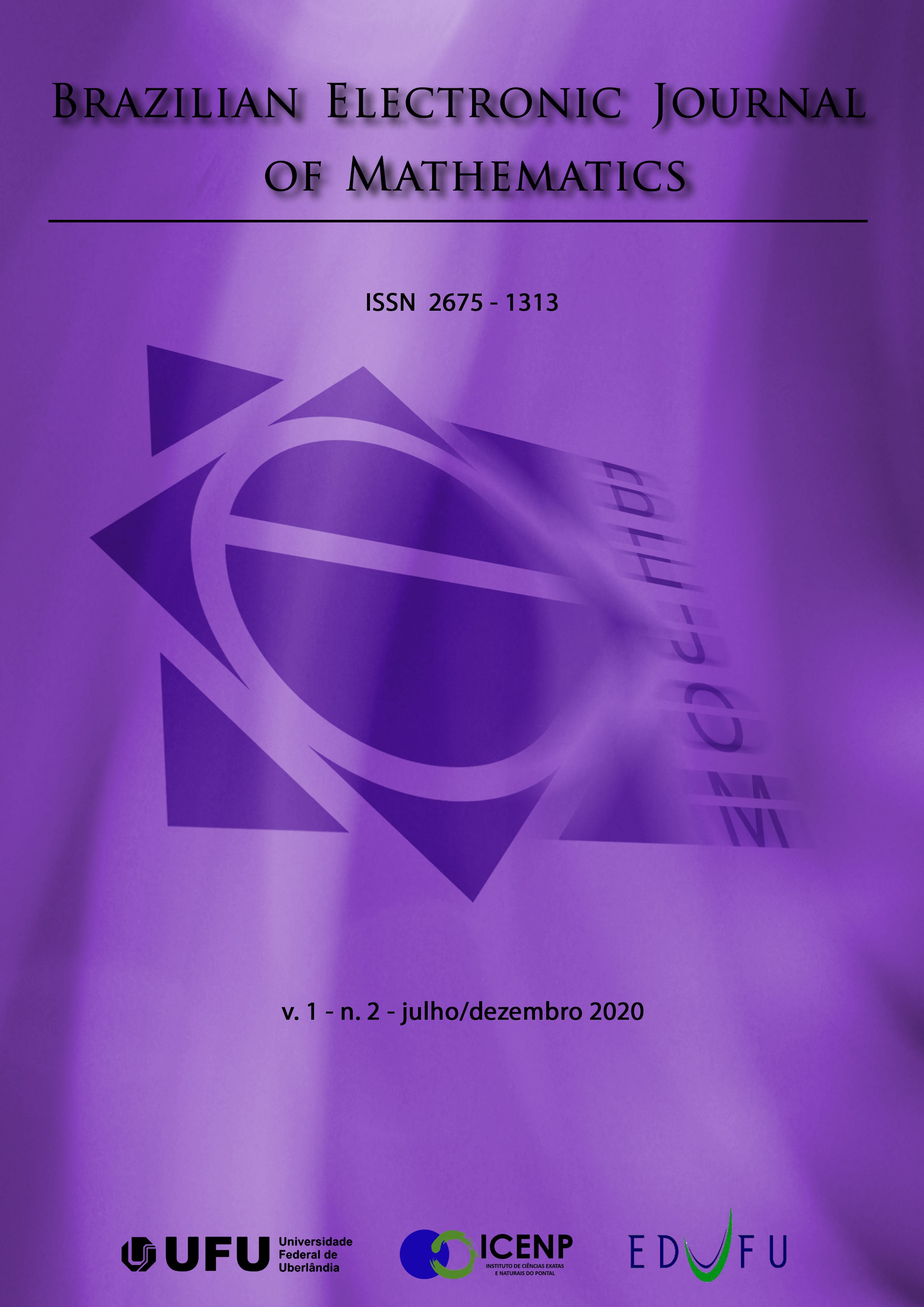Estatística de jogos: blackJack
DOI:
https://doi.org/10.14393/BEJOM-v1-n2-2020-53318Palavras-chave:
Blackjack, Jogos de cartas, estatística, Probabilidade, Algoritmo computacionalResumo
O principal objetivo deste artigo é compreender a fundo o mecanismo de funcionamento do jogo de cartas blackjack, bem como estabelecer uma estratégia simples para maximizar as chances de vitória. Inicialmente, foi feito um breve histórico sobre esse jogo, discutindo suas origens e evolução. Explicou-se em detalhes as regras do blackjack (sistema de pontuação e procedimentos do jogo). Para contextualizar a popularidade do blackjack, foram citados livros, filmes e jogos de vídeo game onde o mesmo apresenta algum protagonismo. A seguir, foi apresentado na íntegra o programa computacional utilizado para fazer o levantamento numérico das probabilidades de obter uma dada pontuação usando o sistema de pontos do blackjack, quando sorteamos aleatoriamente 2, 3, 4, 5, 6, 7, 8, 9, 10 e 11cartas de um baralho francês comum e completo, contendo 52 cartas. Explicou-se minunciosamente o algoritimo desse programa, apresentou-se seus resultados e os analisamos em detalhes. Por fim, simulou-se várias rodadas de blackjack com apenas um jogador e um crupiê. Nessas simulações, proibiu-se que o jogador pedisse novas cartas quando sua pontuação ultrapassasse uma certa pontução máxima (Pmax) ou quando ele chega a um certo número máximo de cartas (Nmax). Mais uma vez, apresentou-se o programa computacional completo e o discutimos linha a linha. Analisando os resultados de 100 simulações, onde varreu-se o valor de Pmax de 12 a 21 e o valor de Nmax de 2 a 11, procurou-se pela combinação de valores de Pmax e Nmax que trazem a melhor chance de vitória. Na melhor situação, as chances de vitória do crupiê são apenas 4,7% maiores do que as do jogador.
Downloads
Referências
HISTORY of Black Jack. The world of playing cards. Diponível em: https://www.wopc.co.uk/history/blackjack/blackjack. Acesso em: 02 abr. 2019.
CERVANTES, Miguel de. Novelas Exemplares, São Paulo, Cosac & Naify, 2015.
CARDS Games Rules: Blackjack. Pagat.com. Diponível em: https://www.pagat.com/banking/blackjack.html. Acesso em 02 abr. 2019.
THORP E. O. Beat the Dealer, New York, Random House, 1966.
WONG, S. Professional Blackjack, Las Vegas, Piyee Press, 1994.
GRIFFIN, P. A. The Theory of Blackjack: The Compleat Card Counter’s Guide to the Casino Game of 21, Las Vegas, Huntington Press, 1999.
Downloads
Publicado
Edição
Seção
Licença
Copyright (c) 2020 BRAZILIAN ELECTRONIC JOURNAL OF MATHEMATICS (BEJOM)

Este trabalho está licenciado sob uma licença Creative Commons Attribution-NonCommercial 4.0 International License.
- Os artigos publicados a partir de 2025 são licenciados sob a versão CCBY-4.0. Ao enviar o material para publicação, os autores estarão automaticamente, concordando com as diretrizes editoriais do periódico e assumindo que o texto foi devidamente revisado. A submissão simultânea de artigos a outras revistas é proibida, e, é também proibida a tradução de artigos publicados no periódico para outro idioma sem a devida autorização.
- Os artigos publicados em anos anteriores a 2025 são licenciados sob a versão CC BY-NC 4.0.









